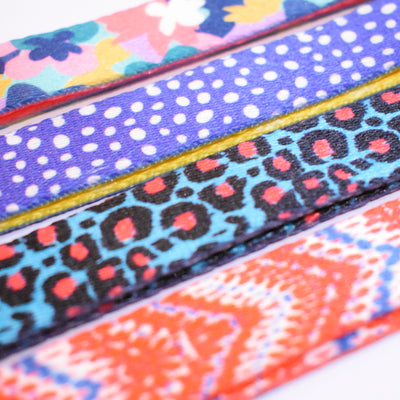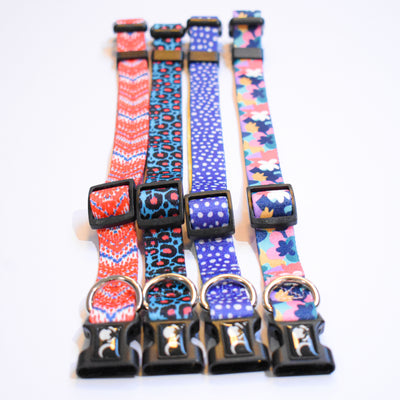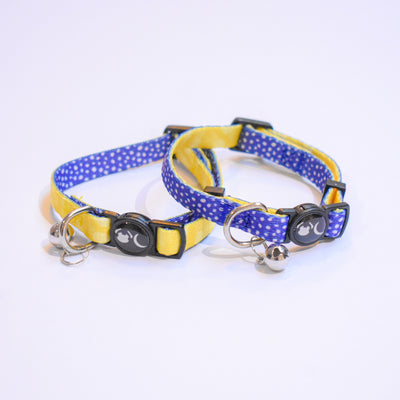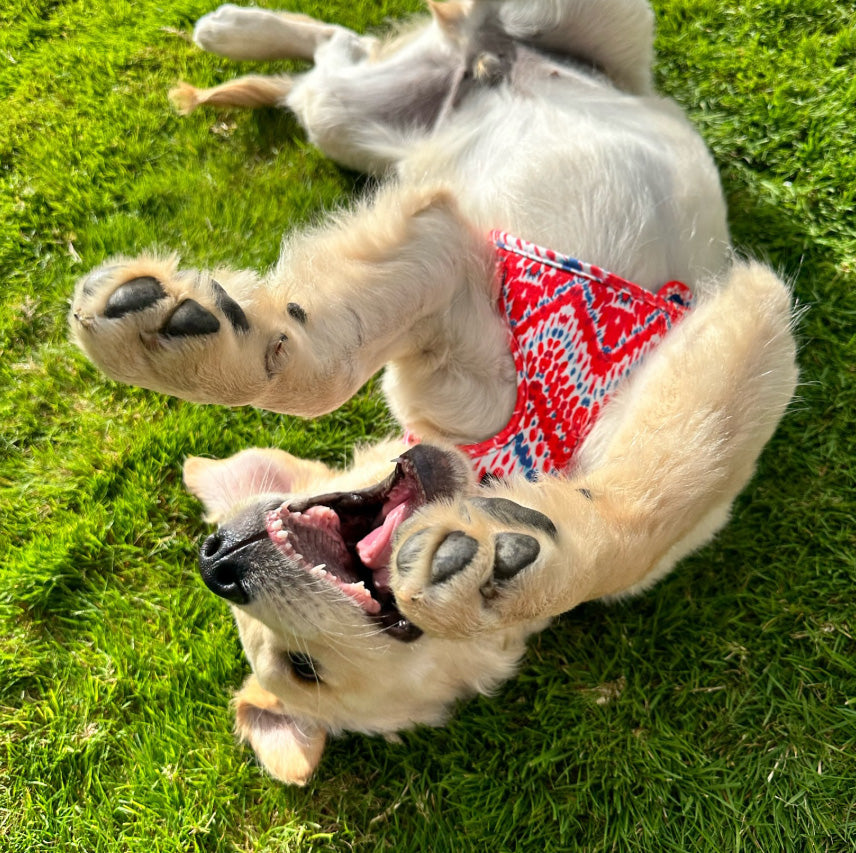The right harness can turn daily walks from a wrestling match into moments of pure joy with your four-legged friend. While harnesses feel like they have been around forever they were only invented in 2009, proving just how essential proper equipment has become for pet owners who truly care about their dog's wellbeing.
You're probably weighing up a breathable mesh dog harness for those sweltering summer adventures or a practical step-in dog harness for your wriggly pup. Both choices have their devoted fans, and for good reason.
We've discovered that each style brings something special to the table. Mesh harnesses shine when it comes to breathability and lightweight comfort, perfect for keeping your dog cool and content. Step-in harnesses have won hearts for their simple application - brilliant for dogs who get anxious when things go over their heads. The golden rule remains the same regardless of your choice: you should always fit two fingers comfortably underneath without it feeling tight.
This guide will help you choose between mesh and step-in harnesses, covering everything from lasting quality to the perfect fit. The right harness does more than protect your dog's neck and spine by spreading pressure across their chest - it gives you better control during busy moments, especially important for larger breeds and those bundles of energy we all know and love. We'll explore what makes each style special and help you find the perfect match for your beloved companion.
Harness design and fit: Mesh vs Step-in
The differences between these two designs are quite striking once you see them side by side. Mesh harnesses work like a comfortable vest, wrapping around your dog's chest with breathable fabric and minimalist straps at the rear keeps them cool. Step-in harnesses take a different approach entirely - they're built as loops that your dog steps into before you secure everything at the top.
Here's where mesh harnesses really shine: they spread pressure beautifully across your dog's chest and shoulders. Perfect for those determined pullers who think every walk is a race to the finish line. Many come with extra padding around sensitive spots like the armpits, and they typically fasten with hook-and-loop strips or buckles on the back for easy adjustment.
Step-in harnesses keep things simple with their figure-eight design. Your dog pops their front legs through the loops, you clip it closed along their back, and you're ready to go. This style works wonderfully for dogs who get flustered when things go over their heads or those with mobility considerations.
Each design brings its own strengths:
- Mesh harnesses excel at all-day comfort, spread pressure evenly, and often feature reflective strips for evening walks
- Step-in harnesses shine with quick application, simple design, and usually allow more natural movement
Getting the fit right varies between styles too. With mesh harnesses, you'll want the chest piece to sit comfortably without limiting shoulder movement. Step-in harnesses need careful adjustment of those leg loops - too loose and they'll slip off, too tight and they'll cause discomfort during your adventures.
Whatever style catches your eye, proper measuring stays essential. Both options should let you slip two fingers between the harness and your dog's body when fitted correctly. Snug enough to keep escape artists secure, loose enough to let them move naturally during those daily walks you both treasure.
Choosing is Based on Dog Size, Age, and Temperament
Every dog is wonderfully unique, and your pup's individual personality and physical traits will guide you toward the perfect harness choice. A dainty Chihuahua needs something completely different from a powerful Labrador, just as a bouncy puppy has different requirements than a distinguished senior dog.
Small breeds do best with lightweight harnesses that won't overwhelm their delicate build. Mesh options work beautifully here - they spread pressure gently whilst staying kind to fragile bones. Step-in styles can be equally perfect for little ones, as long as you get the sizing spot on to prevent any great escapes. Dogs under 9 kilos need harnesses specifically made for small breeds to avoid problems like tracheal collapse.
Larger, stronger dogs may need robust construction that can handle their power. Step-in models might not offer enough support for determined pullers. Deep-chested breeds like Greyhounds need harnesses with plenty of adjustment points to fit their elegant, unique shape properly.
Puppies bring their own delightful challenges. They grow at an astonishing rate, so highly adjustable harnesses save you from constantly buying new ones. Many trainers suggest keeping things simple with lightweight designs for puppies still mastering their lead manners - both mesh and basic step-in styles work wonderfully.
Our senior dogs deserve extra consideration too. Harnesses with supportive features can make all the difference - some include helpful handles that let you gently assist your ageing companion when they need a little boost getting up.
Temperament plays a huge part in your decision:
- Anxious dogs who hate things going over their heads often prefer step-in designs
- Escape artists need secure harnesses with multiple straps and adjustment points
Activity levels matter just as much. Athletic dogs need harnesses that allow complete freedom of movement, whilst more relaxed pups might prefer extra padding and comfort over featherweight design.
Both mesh and step-in harnesses can work brilliantly - it's all about finding the right match for your particular dog's needs and personality.
Practical Features and Maintenance
Daily life with your dog means thinking beyond just design and fit - practical features and easy maintenance can make all the difference to your walking routine. Both mesh and step-in varieties bring their own clever advantages to your everyday adventures.
Mesh harnesses excel with their lightweight, breathable materials that keep your dog comfortable during longer walks. The real winner here is that most mesh options are machine washable at 30°C, making cleanup after those inevitable muddy puddle encounters wonderfully simple.
Step-in harnesses shine with their quick-release buckles - perfect for fuss-free wearing and removal. This design stops escape artists from wriggling free, something traditional collars simply can't match. The straightforward application works beautifully for energetic pups who can't sit still during harness time. Even better, most step-in models spread weight evenly across the chest and shoulders rather than the neck, keeping your dog safer during walks.
Proper care keeps your harness working perfectly for years. Check hardware and stitching regularly for wear and tear. Hand washing works best for both types - use mild soap with lukewarm water, then air dry away from direct sunlight. For machine-washable mesh harnesses, pop them in a protective laundry bag on a gentle cycle.
Remember to adjust your harness if your dog's weight changes or after grooming sessions. The proper fit should allow you to squeeze two fingers underneath - slightly snugger than the often-recommended two-finger rule.
With proper care and attention to these practical details, either harness style will give you years of comfortable, enjoyable walks with your four-legged companion.
Conclusion
The perfect harness choice comes down to knowing your dog inside and out - their quirks, their needs, and what makes those daily walks special for both of you. We've explored how mesh and step-in styles each bring something wonderful to the table, and there's honestly no wrong choice when you put your pet's comfort first.
Research published in the Journal of Veterinary Behaviour confirms what we pet lovers already know: "Properly fitted harnesses significantly reduce pressure on canine cervical vertebrae during pulling episodes compared to traditional collars" (Pauli et al., 2018). This applies to both styles we've discussed, making either option a caring choice for your beloved companion.
Mesh harnesses truly shine when breathability matters most. Dogs in warmer climates or those with thick, luxurious coats will thank you for this thoughtful choice. The broader surface area spreads pressure beautifully, which is why Dr. Emma Thompson notes, "Pressure distribution across the chest rather than concentrated force on the throat reduces potential for tracheal damage by approximately 63% in reactive dogs" (Canine Behaviour Quarterly, 2020).
Step-in harnesses work brilliantly for those sensitive souls who get anxious about things going over their heads. Their simple design means quick morning walks when you're both eager to get outside. The minimal construction often gives active breeds the freedom they crave during their adventures.
Whatever you choose, that two-finger fit rule stays important - snug enough for security, loose enough for comfort. As veterinary physiotherapist Dr. James Miller reminds us, "Even the most ergonomically designed harness can cause discomfort and potential gait alterations if improperly fitted" (Veterinary Therapeutics Journal, 2021).
Your senior Basset Hound has different needs than that bouncy Border Collie puppy next door. Both mesh and step-in designs offer real advantages over traditional collars, but the right choice depends entirely on your particular pup's personality and needs.
The harness that makes you both happy on those precious daily walks - that's your winner. Those moments together mean everything, and they deserve equipment that keeps you both comfortable and connected. After all, love and care for every animal should be at the heart of every choice we make for our cherished companions.







